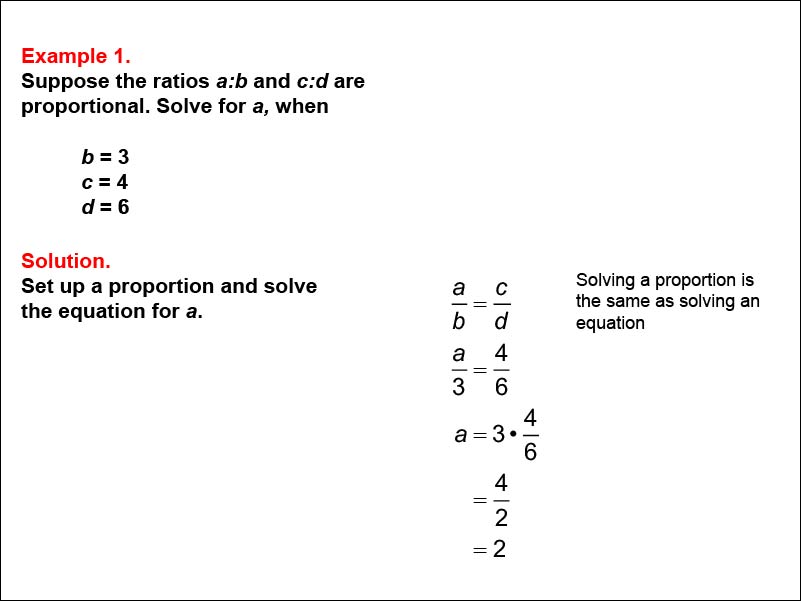
Display Title
Math Example--Ratios, Proportions, and Percents--Solving Proportions: Example 1
Display Title
Math Example--Ratios, Proportions, and Percents--Solving Proportions: Example 1

Topic
Ratios, Proportions, and Percents
Description
This example demonstrates how to solve a proportion problem where two ratios a:b and c:d are proportional. Given the values b = 3, c = 4, and d = 6, we need to find the value of a. The proportion is set up as a / 3 = 4 / 6, which is then solved to find that a = 2.
Understanding ratios and proportions is fundamental in mathematics, with applications in various fields such as geometry, physics, and everyday problem-solving. This collection of examples helps teach the topic by providing step-by-step solutions to different scenarios, allowing students to see how the concept applies in various contexts.
Exposure to multiple worked-out examples is crucial for students to fully grasp the concept of proportions. Each example reinforces the basic principles while introducing slight variations, helping students develop a more comprehensive understanding and the ability to tackle diverse problems.
Teacher's Script: "Let's examine this proportion problem together. We'll set up the equation a / 3 = 4 / 6 and solve for a. Notice how we can cross-multiply to simplify our calculation. This method will be useful in many similar problems we'll encounter."
For a complete collection of math examples related to Solving Proportions click on this link: Math Examples: Solving Proportions Collection.
| Common Core Standards | CCSS.MATH.CONTENT.6.RP.A.3, CCSS.MATH.CONTENT.7.RP.A.2, CCSS.MATH.CONTENT.8.EE.B.5, CCSS.MATH.CONTENT.7.RP.A.2.B, CCSS.MATH.CONTENT.7.RP.A.2.C |
|---|---|
| Grade Range | 6 - 8 |
| Curriculum Nodes |
Algebra • Ratios, Proportions, and Percents • Proportions |
| Copyright Year | 2013 |
| Keywords | solving equations, solving proportions |